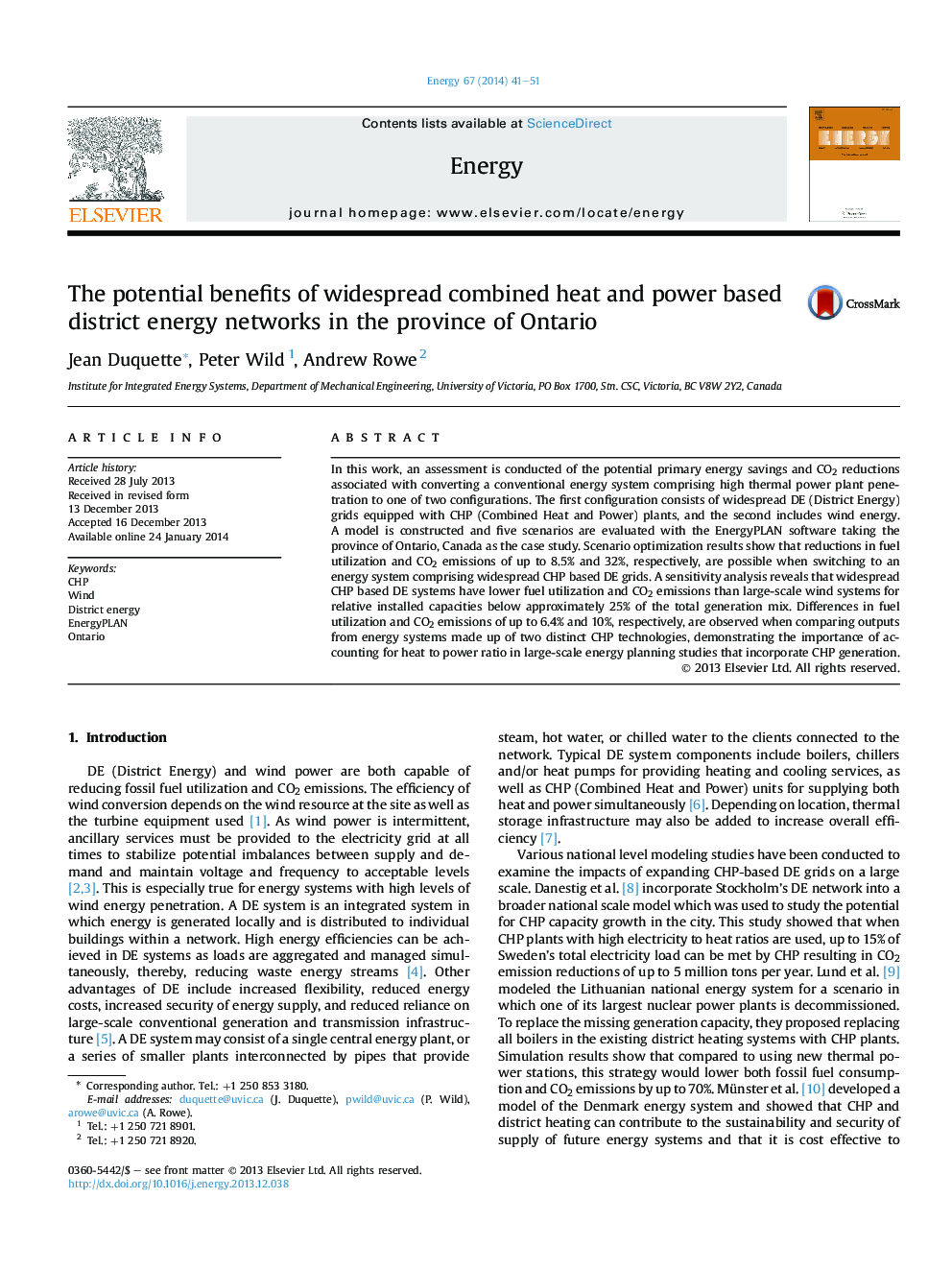| Article ID | Journal | Published Year | Pages | File Type |
|---|---|---|---|---|
| 1732537 | Energy | 2014 | 11 Pages |
Abstract
In this work, an assessment is conducted of the potential primary energy savings and CO2 reductions associated with converting a conventional energy system comprising high thermal power plant penetration to one of two configurations. The first configuration consists of widespread DE (District Energy) grids equipped with CHP (Combined Heat and Power) plants, and the second includes wind energy. AÂ model is constructed and five scenarios are evaluated with the EnergyPLAN software taking the province of Ontario, Canada as the case study. Scenario optimization results show that reductions in fuel utilization and CO2 emissions of up to 8.5% and 32%, respectively, are possible when switching to an energy system comprising widespread CHP based DE grids. A sensitivity analysis reveals that widespread CHP based DE systems have lower fuel utilization and CO2 emissions than large-scale wind systems for relative installed capacities below approximately 25% of the total generation mix. Differences in fuel utilization and CO2 emissions of up to 6.4% and 10%, respectively, are observed when comparing outputs from energy systems made up of two distinct CHP technologies, demonstrating the importance of accounting for heat to power ratio in large-scale energy planning studies that incorporate CHP generation.
Related Topics
Physical Sciences and Engineering
Energy
Energy (General)
Authors
Jean Duquette, Peter Wild, Andrew Rowe,
